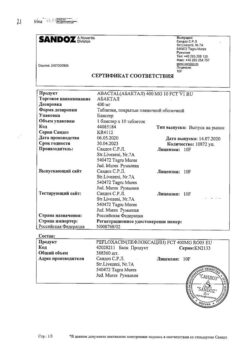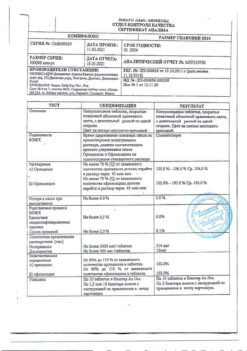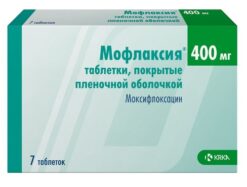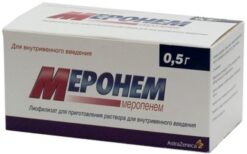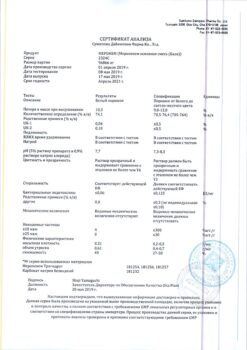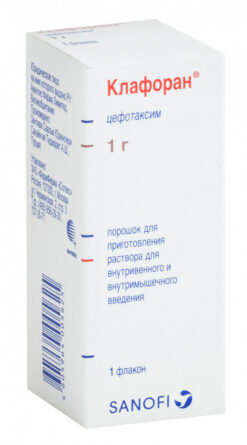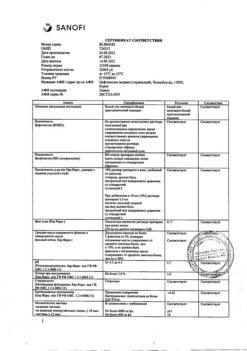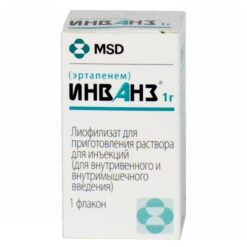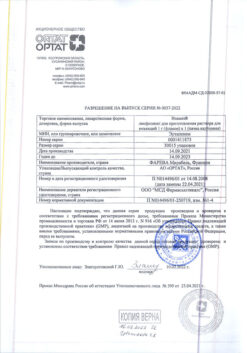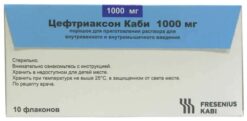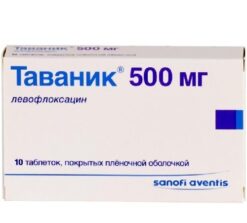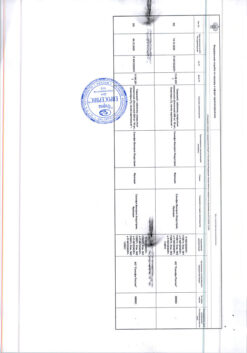No products in the cart.
Claritrosin, tablets 500mg 5 pcs
€1.00
Out of stock
(E-mail when Stock is available)
Description
Pharmgroup:
Macrolide antibiotic.
Pharmaceutical action:
Claritrosin is a second generation macrolide bacteriostatic antibiotic from the group of broad-spectrum macrolides. It disrupts protein synthesis of microorganisms (binds to 50S subunit of the ribosome membrane of the microbial cell).
. (Streptococcus pyogenes, Streptococcus viridans, Streptococcus pneumoniae), Haemophilus influenzae (parainfluenzae), Haemophilus ducreyi , Neisseria donorrhoeae, Neisseria meningitidis, Listeria monocytogenes, Legionella pneumophila, Mycoplasma pneumoniae, Helicobacter (Campilobacter) pylori, Campilobacter jejuni, Chamidia pneumoniae (trachomastis), Moraxella (Branhamella) catarrhalis, Bordetella pertussis, Propionibacterium acnes, Mycobacterium avium, Mycobacterium leprae, Staphylococcus aureus, Ureaplasma urealyticum, Toxoplasma gondii, Corynebacterium spp., Borrelia burgdorferi, Pasteurlla multocida, some anaerobes (Eubacterium spp., Peptococcus spp., Propionibacterium spp., Clostridium perfringens, Bacteroides melaninogenicus) and all mycobacteria except M. tuberculosis.
Pharmacokinetics:
Absorption is rapid. Food slows absorption without significantly affecting bioavailability. Bioavailability of 250 mg tablets is 50%, in the form of suspension is equivalent or slightly higher than when taken as tablets. The binding to plasma proteins is 65-75%. After a single use two Cmax peaks are registered.
The second peak is due to the ability of the drug to accumulate in the gallbladder followed by gradual or rapid entry into the intestine and absorption. TCmax when taking 250 mg is 2-3 h, for prolonged-acting LF it is 6 h.
After oral administration 20-30% of the accepted dose of clarithromycin is rapidly hydroxylated in the liver by cytochrome isoenzymes CYP3A4, CYP3A5 and CYP3A7 to form the main metabolite – 14 (R)-hydroxyclarithromycin, which has marked antimicrobial activity against Haemophilus influenzae. It is an inhibitor of CYP3A4, CYP3A5 and CYP3A7 isoenzymes.
When taking regularly 250 mg/day, Css of unchanged drug and its main metabolite are 1 and 0.6 mcg/ml, respectively; T1/2 is 3-4 and 5-6 hours, respectively. In dose increase up to 500 mg/day Css of unchanged drug and its metabolite in plasma is 2.7-2.9 and 0.83-0.88 µg/ml, respectively; T1/2 is 4.8-5 and 6.9-8.7 h, respectively; for prolonged action LP (500 mg/day) – 5.3 and 7.7 h; 1000 mg/day – 5.8 and 8.9 h, respectively.
Therapeutic concentrations are accumulated in the lungs, skin and soft tissues (in which concentrations are 10 times higher than serum concentrations).
It is excreted by the kidneys and intestines (20-30% – in unchanged form, the rest – as metabolites). In a single administration of 250 and 1200 mg, 37.9 and 46% is excreted by the kidneys, and 40.2 and 29.1% by the intestine, respectively.
In CKD, TCmax, Cmax and AUC of clarithromycin and its metabolite are increased.
Indications
Indications
Clarithrosin is indicated for the treatment of infectious diseases caused by susceptible microorganisms. These diseases include:
– Infections of the lower respiratory tract (bronchitis, pneumonia).
– Infections of the upper respiratory tract (pharyngitis, sinusitis), otitis.
– Skin and soft tissue infections (folliculitis, erysipelas).
– Widespread or localized mycobacterial infections caused by Mycobacterium avium and Mycobacterium intracellulare.
Localized infections caused by Mycobacterium chelonae, Mycobacterium fortuitum and Mycobacterium kansasii.
Clarithrosin is indicated to eradicate H. pylori and reduce the incidence of duodenal ulcer recurrence.
Pharmacological effect
Pharmacological effect
Pharmaceutical group:
macrolide antibiotic.
Pharmaceutical action:
Clarithrosin is a second-generation macrolide bacteriostatic antibiotic from the group of broad-spectrum macrolides. Disturbs the protein synthesis of microorganisms (binds to the 50S subunit of the ribosomal membrane of the microbial cell).
(Streptococcus pyogenes, Streptococcus viridans, Streptococcus pneumoniae), Haemophilus influenzae (parainfluenzae), Haemophilus ducreyi, Neisseria donorrhoeae, Neisseria meningitidis, Listeria monocytogenes, Legionella pneumophila, Mycoplasma pneumoniae, Helicobacter (Campilobacter) pylori, Campilobacter jejuni, Chamidia pneumoniae (trachomastis), Moraxella (Branhamella) catarrhalis, Bordetella pertussis, Propionibacterium acnes, Mycobacterium avium, Mycobacterium leprae, Staphylococcus aureus, Ureaplasma urealyticum, Toxoplasma gondii, Corynebacterium spp., Borrelia burgdorferi, Pasteurlla multocida, some anaerobes (Eubacterium spp., Peptococcus spp., Propionibacterium spp., Clostridium perfringens, Bacteroides melaninogenicus) and all mycobacteria, except M. tuberculosis.
Pharmacokinetics:
Absorption is fast. Food slows absorption without significantly affecting bioavailability. The bioavailability of 250 mg tablets is 50%, in the form of a suspension, equivalent to or slightly higher than when taken in tablet form. Communication with plasma proteins – 65-75%. After a single dose, 2 Cmax peaks are recorded.
The second peak is due to the ability of the drug to accumulate in the gallbladder, followed by gradual or rapid entry into the intestine and absorption. TCmax when taking 250 mg – 2-3 hours, for long-acting dosage form – 6 hours.
After oral administration, 20-30% of the administered dose of clarithromycin is quickly hydroxylated in the liver by cytochrome isoenzymes CYP3A4, CYP3A5 and CYP3A7 to form the main metabolite – 14 (R)-hydroxyclarithromycin, which has pronounced antimicrobial activity against Haemophilus influenzae. It is an inhibitor of the isoenzymes CYP3A4, CYP3A5 and CYP3A7.
With regular intake of 250 mg/day, the Css of the unchanged drug and its main metabolite are 1 and 0.6 μg/ml, respectively; T1/2 – 3-4 and 5-6 hours, respectively. When the dose is increased to 500 mg/day, Css of the unchanged drug and its metabolite in plasma is 2.7-2.9 and 0.83-0.88 μg/ml, respectively; T1/2 – 4.8-5 and 6.9-8.7 hours, respectively, for long-acting dosage form (500 mg/day) – 5.3 and 7.7 hours; 1000 mg/day – 5.8 and 8.9 hours, respectively.
At therapeutic concentrations it accumulates in the lungs, skin and soft tissues (their concentrations are 10 times higher than serum concentrations).
It is excreted by the kidneys and intestines (20-30% in unchanged form, the rest in the form of metabolites). With a single dose of 250 and 1200 mg, 37.9 and 46% are excreted by the kidneys, and 40.2 and 29.1%, respectively, by the intestines.
With chronic renal failure, the TCmax, Cmax and AUC of clarithromycin and its metabolite increase.
Special instructions
Special instructions
In the presence of chronic liver diseases, it is necessary to regularly monitor serum enzymes.
Clarithrosin is prescribed with caution against drugs metabolized by the liver (it is recommended to measure their concentration in the blood).
In the case of co-administration of Clarithrosin with warfarin or other indirect anticoagulants, it is necessary to monitor the prothrombin time.
If you have a history of heart disease, simultaneous use with terfenadine, cisapride, or astemizole is not recommended.
Attention should be paid to the possibility of cross-resistance between clarithromycin and other macrolide antibiotics, as well as lincomycin and clindamycin.
With prolonged or repeated use of the drug Clarithrosin, superinfection (growth of insensitive bacteria and fungi) may develop.
Active ingredient
Active ingredient
Clarithromycin
Composition
Composition
1 tab.:
– Clarithromycin 500 mg.
Excipients:
microcrystalline cellulose,
polyvinylpyrrolidone (povidone),
milk sugar (lactose),
potato starch,
Aerosil (silicon dioxide colloidal),
magnesium stearate,
talc;
shell:
hydroxypropyl methylcellulose (hypromellose) or hydroxypropyl methylcellulose, titanium dioxide (titanium dioxide) polyethylene oxide 4000 (polyethylene glycol 4000), threopeline O.
Contraindications
Contraindications
Clarithromycin is contraindicated in patients with hypersensitivity to macrolide antibiotics.
When treating with clarithromycin, do not prescribe ergot derivatives.
When treating with clarithromycin, it is prohibited to take cisapride, pimozide, astemizole and terfenadine (see also section Interactions with other drugs).
In patients taking these drugs simultaneously with clarithromycin, there is an increase in their concentration in the blood. This may result in prolongation of the QT interval and the development of cardiac arrhythmias, including ventricular paroxysmal tachycardia, ventricular fibrillation and ventricular flutter or fibrillation.
Severe liver and/or kidney dysfunction.
Side Effects
Side Effects
The most common complaints are from the gastrointestinal tract (nausea, dyspepsia, abdominal pain, vomiting and diarrhea). Moderate to life-threatening pseudomembranous colitis has been reported. Other adverse reactions include headaches, taste disturbances, and transient increases in liver enzymes. There are reports of rare cases of parasthesia.
There are reports of rare cases of hepatitis with increased levels of liver enzymes in the blood and the development of cholestasis and jaundice.
These liver injuries were, in some cases, severe and usually reversible. In exceptional cases, liver failure with fatal outcome has been observed.
There are reports of rare cases of increased serum creatinine concentrations, the development of interstitial nephritis, and the development of renal failure.
When taking clarithromycin orally, allergic reactions were observed, the intensity of which varied from urticaria and skin rash to anaphylaxis and Stevens-Johnson syndrome.
There are reports of hearing loss during treatment with clarithromycin, which in most cases was restored after discontinuation of Clarithrosin. Changes in taste perception have also been reported, usually occurring in conjunction with taste disturbances. There are reports of the development of glossitis, stomatitis, candidiasis of the oral mucosa and changes in the color of the tongue during treatment with clarithromycin. Changes in tooth color have also been reported in patients receiving clarithromycin. The change in tooth color was reversible in most cases. In rare cases, hypoglycemia has been observed; in a number of these cases, hypoglycemia developed in patients who took oral hypoglycemic agents or insulin during treatment with clarithromycin.
Isolated cases of thrombocytopenia and leukopenia have been reported.
When taking clarithromycin, transient side effects on the central nervous system were observed: dizziness, anxiety, fear, fear, insomnia, nightmares, tinnitus, confusion, disorientation, hallucinations, psychosis and depersonalization.
When treating with clarithromycin, as with the use of other macrolides, prolongation of the QT interval, ventricular arrhythmia, including ventricular paroxysmal tachycardia and ventricular flutter or fibrillation, were extremely rarely observed.
Interaction
Interaction
When taken simultaneously, it increases the concentration in the blood of drugs metabolized in the liver with the help of cytochrome P450 enzymes – indirect anticoagulants, carbamazepine, theophylline, astemizole, cisapride, terfenadine (2-3 times), triazolam, midazolam, cyclosporine, disopyramide, phenytoin, rifabutin, lovastatin, digoxin, ergot alkaloids, etc.
Rare cases of acute necrosis of skeletal muscles have been reported, coinciding with the simultaneous administration of clarithromycin and the hydroxymethylglutaryl-CoA reductase inhibitors lovastatin and simvastatin.
There are reports of increased concentrations of digoxin in the plasma of patients receiving simultaneously digoxin and clarithromycin tablets. In such patients, it is necessary to constantly monitor the level of digoxin in the serum to avoid digitalis intoxication.
Clarithromycin may decrease the clearance of triazolam and thus increase its pharmacological effects resulting in drowsiness and confusion.
Concomitant use of clarithromycin and ergotamine (ergot derivatives) can lead to acute ergotamine toxicity, manifested by severe peripheral vasospasm and perverse sensitivity.
Concomitant administration of oral zidovudine and clarithromycin tablets to HIV-infected adults may result in decreased steady-state zidovudine concentrations. Given that clarithromycin is likely to alter the absorption of concomitantly administered orally administered zidovudine, this interaction is largely avoided by taking clarithromycin and zidovudine at different times of the day (at least 4 hours apart).
With the simultaneous administration of clarithromycin and ritonavir, the serum concentrations of clarithromycin increase. No dose adjustment of clarithromycin is required in these cases for patients with normal renal function. However, in patients with creatinine clearance from 30 to 60 ml/min. The dose of clarithromycin should be reduced by 50%. When creatinine clearance is less than 30 ml/min. The dose of clarithromycin should be reduced by 75%.
During concomitant treatment with ritonavir, clarithromycin should not be prescribed in doses exceeding 1 g/day.
Overdose
Overdose
The development of symptoms from the gastrointestinal tract (nausea, vomiting, diarrhea) is likely; headache, confusion.
In case of overdose, immediate gastric lavage and symptomatic treatment are necessary. Hemodialysis and peritoneal dialysis do not lead to a significant change in clarithromycin serum levels.
Manufacturer
Manufacturer
Sintez, Russia
Additional information
| Manufacturer | Sintez OAO, Russia |
|---|---|
| Medication form | pills |
| Brand | Sintez OAO |
Related products
Buy Claritrosin, tablets 500mg 5 pcs with delivery to USA, UK, Europe and over 120 other countries.



